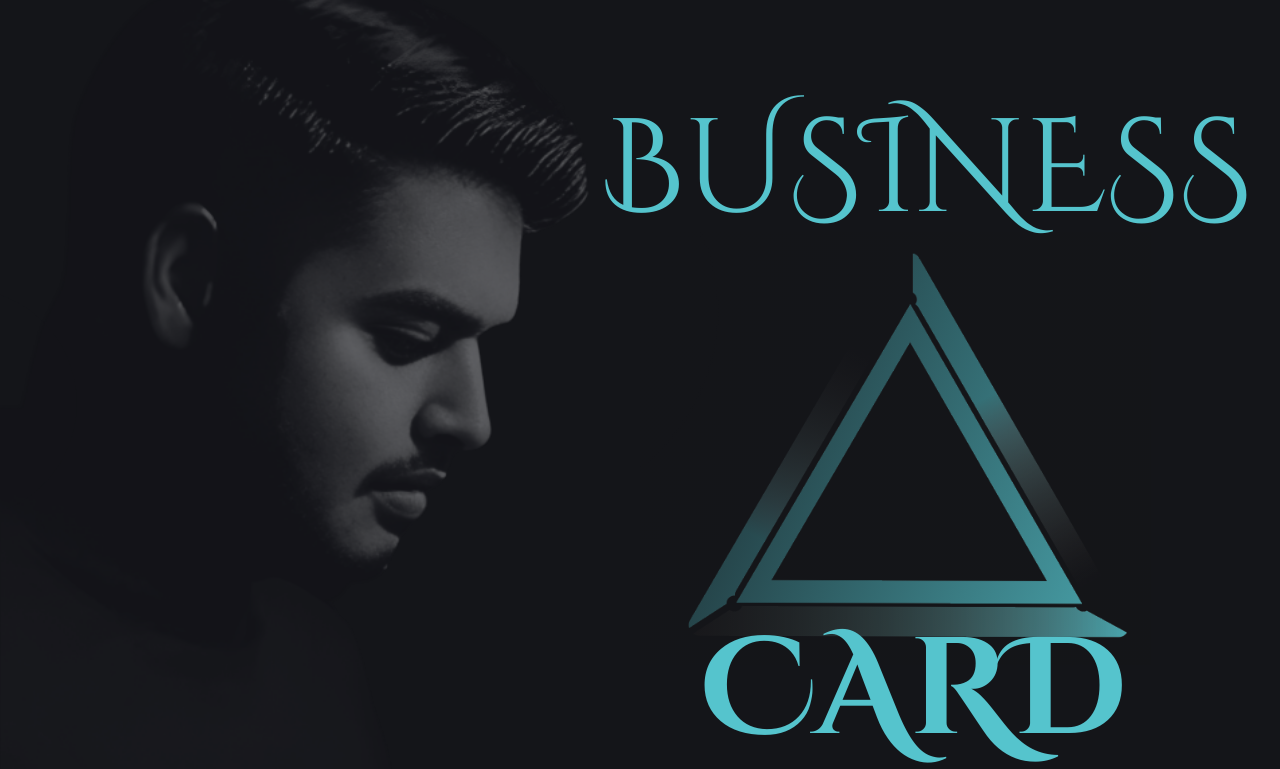Business Card Design
It’s not just a card—it’s a piece of your brand

The Power of a Business Card: How to Design One That Stands Out
In a world full of digital tools and online communication, a small printed business card might seem old-fashioned. But it’s not. A well-designed business card is still one of the most powerful tools for networking and leaving a lasting impression. It’s not just a card—it’s a piece of your brand.
In this blog, we’ll look at how to design a unique, attractive, and professional business card using simple language and easy steps.
Why Business Cards Still Matter
A business card is more than just contact information. It’s the first impression people get of you and your business. When you meet someone face-to-face, giving them a card feels personal and memorable. Unlike an email or message, it doesn’t get buried in a digital inbox. It stays in their wallet, desk, or cardholder.
What Makes a Great Business Card?
A great business card does three important things:
-
Shares contact information clearly
-
Reflects your brand or personality
-
Makes people remember you
Let’s break it down into simple steps.
Step 1
Keep It Clean and Simple
Your business card should not be crowded. Only include the essential details:
-
Your full name
-
Job title or role
-
Company or brand name
-
Phone number
-
Email address
-
Website (if you have one)
-
Social media handles (optional)
Use simple fonts that are easy to read. Avoid using more than two font styles.
Step 2
Match Your Brand Style
If you already have a brand, your card should match it. That means using:
-
Your brand colors
-
Your logo
-
Your brand fonts
If you are a creative person (like a graphic designer or photographer), your card can look bold or artistic. If you’re in a corporate field (like finance or law), your card should look clean, classy, and professional.
Step 3
Choose the Right Size and Shape
Most business cards follow a standard size (3.5 x 2 inches), but you can be creative. Some people use square cards, mini cards, or cards with rounded corners.
However, don’t make it too big or oddly shaped. It should still fit easily in a wallet or cardholder.
Step 4
Use Both Sides of the Card
Don’t waste the back of your card. You can use it to:
-
Add a logo
-
Include a QR code
-
Mention your tagline or services
-
Write a short message like “Let’s connect!” or “Thank you!”
Just make sure it doesn’t look too crowded. Keep the design clean and balanced.
Step 5
Use High-Quality Material
The feel of your card matters. A thin, flimsy card feels cheap. A thick, matte, or glossy card feels premium.
You can also explore:
-
Textured paper
-
Spot UV for shiny text
-
Foil printing for a luxurious look
Remember: the material and finish say a lot about your brand.
Step 6
Add a Personal Touch
To make your card stand out, consider adding a creative element:
-
A photo of yourself (if personal branding matters)
-
An icon or pattern related to your work
-
A custom illustration
-
A handwritten signature (can be printed)
These small touches make your card more unique and memorable.
Step 7
Include a QR Code
A QR code is a smart way to connect your card to the digital world. It can link to:
-
Your website
-
Your digital portfolio
-
Your LinkedIn profile
-
A special offer or landing page
It saves space and makes your card more interactive.
Step 8
Proofread Everything
Before printing, double-check:
-
Spelling of your name
-
Phone numbers and email
-
Website link
-
Spacing and alignment
It’s a small card, but even one mistake can make it look unprofessional.
Bonus Tips for Freelancers and Creatives
If you’re a freelancer, your card is part of your brand story. Consider:
-
Adding your top skills or services on the back
-
Using bright colors or bold fonts
-
Sharing a one-line message like:
“Helping brands grow online” or
“Capturing moments that matter”
Final Thoughts
A business card might be small, but it carries a big message. It tells people who you are, what you do, and how serious you are about your work. So, take the time to design it carefully.
Whether you’re a designer, marketer, photographer, or business owner, your card should make people say, “Wow, that’s a great card!”
In a digital world, a physical card is still a powerful way to connect.
Views: 241
Likes: 7
Comments
Jon Hauard
It is one of the best articles about Businesses Card Design. I think it is the best blue map for a begainer